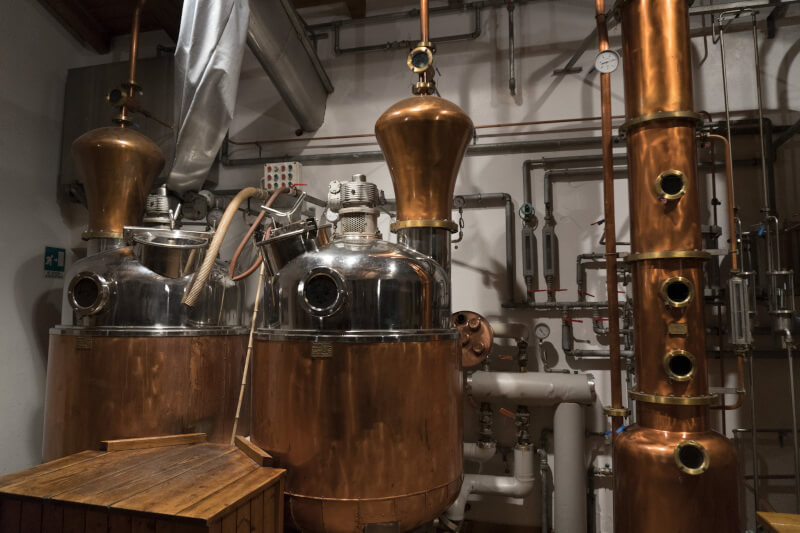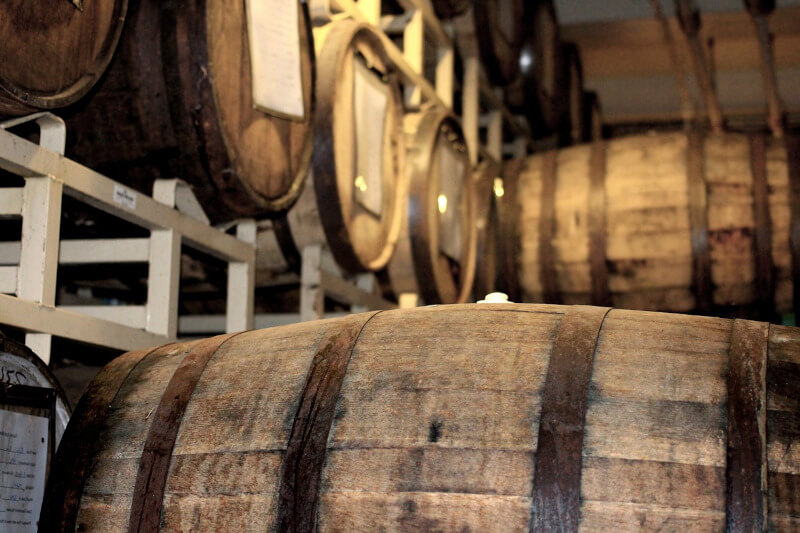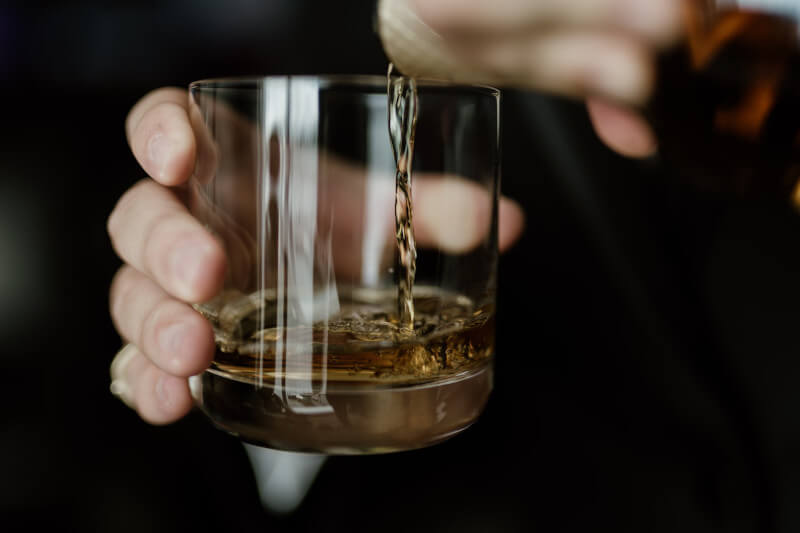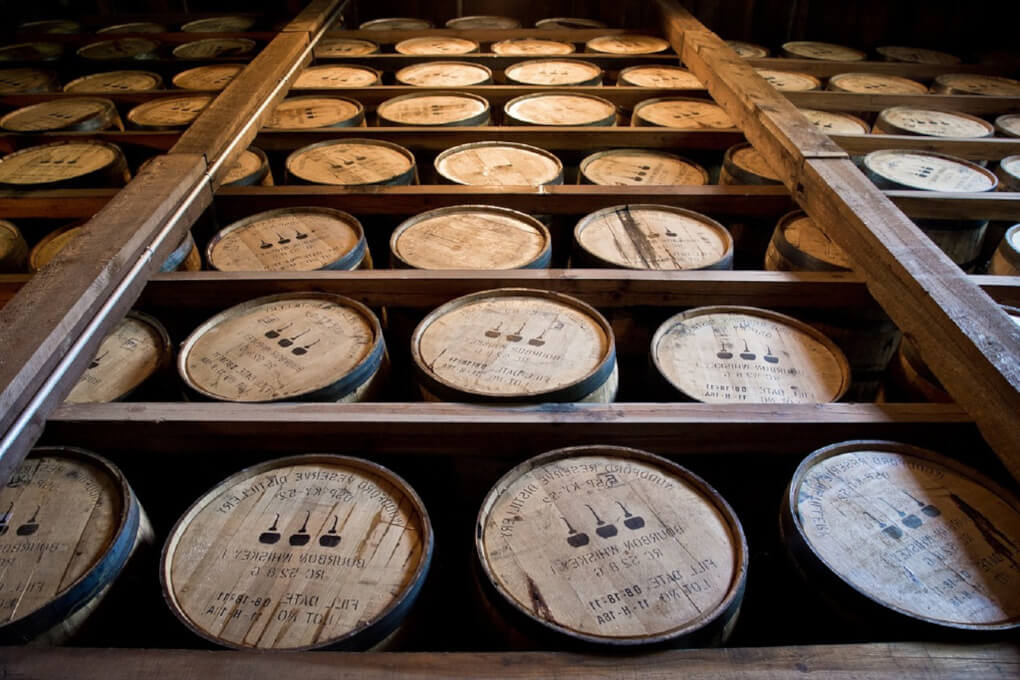The length of time a batch of whiskey was aged in charred oak barrels is traditionally how distilleries label their products. The aging process stops after the whiskey is bottled. Because many barrels contain more than one type of whiskey, the legal age of the whiskey is determined by the youngest batch of whiskey in the barrel.
In this short piece, we’ll examine whiskey more closely. When you crack open that thirty-year-old bottle of whiskey, you won’t have to wonder, “How does whiskey get its age?” because we’ll be exploring the science, history, and marketing behind the aging process.
How Does Whiskey Get Its Age During the Distillation Process?
The First Step in Making Whiskey: Malting
There is always a foundational component to whiskey. This can vary greatly by geography and local rules, and consequently by whiskey’s final flavor. The distiller will precondition the grain by soaking it in water, starting the malting process. Knowing when to stop this response and start the next one is crucial.
Mashing
The fermentation process must then commence so that the distiller may extract all the delectable sugars. To do this, distillers use a not-so-sweet process in which they crush the selected grain into a combination known as a mash.
Fermentation
The following step requires the addition of yeast to the mash, which the distillers will now do. Yeast consumes fermented sugars and produces alcohol. The procedure thus far may remind you of making beer, but we’re not there yet. The next stage is the most consequential.
Distilling

The ‘distillers beer’ now needs to be stronger. There are many different kinds of stills, yet they all serve the same purpose. The alcohol is separated by repeatedly washing the mixture. This process is repeated until the distiller is left with an extremely potent spirit that is practically indistinguishable from whiskey before it has fully matured.
Maturation
This is the single most crucial factor in answering the query of how whiskey ages. The distiller will often put the spirit into a barrel, but there are several notable exceptions. The sort of wood used, the location of the warehouse, and the whiskey’s age will all be determined by the desired whiskey flavor profile. A distiller must always be cognizant of local norms and standards.
Why Do Whiskey Makers Use Oak Barrels?

The quick answer is the fact that it is not the wood itself that matters, but rather how the barrel changes during the seasoning process of charring or burning. Whiskey aging in wood barrels dates back to at least the Roman era. For the past one hundred years, whiskey in Scotland has been legally required to undergo a lengthy aging process in oak barrels.
Oak barrels can be prepared in a variety of ways, but the scientific goal is always the same: to melt the sugars within the wood to both seal it and release compounds that alter the flavour.
The American oak Quercus alba is the most prevalent type of oak used since it grows naturally in whiskey-producing locations. Many nations employ their indigenous oak species because there are no mandatory regulations specifying a single species.
Is the Ageing Process for Each Type of Whiskey Unique?
There are several types and even spellings of whiskey. whiskey is aged in a variety of different ways, from the time-honored to the cutting-edge. It’s not simply pickiness; different regions with different distillation traditions inevitably result in different tastes.
Irish and Scotch Whiskies
Scotch and Irish whiskies have different flavors and methods of distillation, but they both need to age for at least three years to develop their full potential. There is more than simply a geographical divide between the two variants. Malted barley and water make up Scotch, while corn, wheat, and barley are used to make Irish whiskey.
Uncut and Unfiltered Bourbon
Rules state that whiskey must be matured for at least two years before it may be called Straight Bourbon whiskey. American Bourbon is distinguished by its sweeter flavour, the region from where its grain is sourced, and the distilling process that gives it hints of vanilla, caramel, and spices. There is a new spelling option for whiskey at last.
Whiskey From Japan
Until recently, there weren’t many ways to categorize Japanese whiskey. A minimum of three years of age is required under new legislation set to take effect in 2021. There are both classic and innovative takes on whiskey in Japan because the country’s whiskey rules do not require oak barrel aging.
How Long Does Whiskey Last?
When discussing the aging of whiskey, a common topic is “How does whiskey get its age?” In addition, “How old can whiskey get?” may be posed. In recent decades, Glenavon Special Liqueur whiskey has been the oldest whiskey on the market. Its alleged age ranges from 160 to 200 years. It was bottled in Scotland in 1851, but the distillery has since gone out of business. A bottle was auctioned off in London in 2006 for £14,850 at Bonhams. The question of how much of this is drinkable remains open.
However, just because whiskey is so ancient and still tastes great doesn’t mean it’s worth the price. Over-aging of whiskey isn’t just feasible, but may be very common in older blends, even though most spirits lovers have sworn by the unwritten adage that “older is better.”
Each whiskey barrel may have a somewhat unique flavor due to slight variations in the distillation process. The longer these flavors are allowed to develop, the stronger they will be. That’s why you might want to try some whiskey mixes sooner rather than later.
In certain areas, whiskey ages more quickly because local regulations do not require distillation to take place in barrels. Mizunara, a native oak species to Japan, has a distinctive wood grain and necessitates a lengthier distillation time. Weather and the barrel’s geographic location are also important considerations. When it pertains to age and flavor, it’s hard to pinpoint a single ideal aging period.
What Effect Does Whiskey’s Age Have on Flavour?
The whiskey stored in the oak barrel is usually drinkable after only a few days. But the alcohol inside might not have the same smoky, deep flavours that we expect from a whiskey that’s been aged for a while. Now that we know how whiskey ages, we can examine how its maturation impacts its scent and flavor. Whiskey goes through a lengthy aging process that changes its flavour and appearance as it ages, yielding wildly varied results depending on the duration of the aging process.

The immature spirit will seem colorless at the start of the process. Spending time in an oak barrel imparts a deeper hue, smoother texture, and hints of the wood’s natural flavor to the beverage. The flavor of the beverage will have taken on many of the characteristics of the cask after five to 10 years. At this point, the whiskey should have taken on an amber hue.
The longer whiskey is aged, the deeper its color. At about fifty years, the original constituents in the spirit may be overpowered by the wood flavor. Many drinkers seek whiskey that has been aged, but distillers have discovered that each bottle has its maximum age.
How Emerging Technologies May Alter Whiskey Ageing in the Future
Whiskey producers like the Lost Spirits Distillery are leveraging cutting-edge technology to forego the traditional whiskey-aging process altogether.
It is estimated that at any given time, some 22 million barrels of Scotch whiskey are aging. To keep up with the ever-increasing demand, many distilleries are looking towards rapid whiskey production. whiskey that has been flash-aged uses technology to speed up the ageing process by exposing it to light, heat, wood splinters, or even sound. Flash-aged goods may not even be legally recognized as whiskey in some countries, and many conventional whiskey distillers consider that contemporary technology goes against the traditions of barrel-aged maturation.
Whiskey enthusiasts are split on the results of the increasing trend of whiskey distilleries competing to perfect the ageing process, even though traditional ageing methods are still widely used. The issue of how whiskey ages will likely have wholly different answers in light of future developments.
Making Informed Choices
You may now confidently answer the question of how whiskey ages. whiskey can be found in almost any bar or liquor store in the world. The range of flavors available in amber spirits is comparable to its color. You should now have a solid grasp of the subject and be able to make a well-informed choice the next time you go for a bottle.

